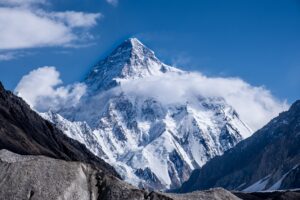The calamitous event of 2008 on K2 unfolded on 1 August when K2, the globe’s second-highest peak, bore witness to the demise of 11 intrepid mountaineers from various international expeditions. Additionally, an unfortunate trio encountered grave injury. This dreadful sequence, commencing with Friday’s ascent and culminating in Saturday’s descent, went down in history as the most severe singular catastrophe in K2’s mountaineering chronicles. Certain intricacies of the ordeal remain shrouded in ambiguity, with distinct plausible narratives being posited concerning the climbers’ timing and manoeuvres, as per recounting by surviving eyewitnesses or via radio correspondences from climbers who met their untimely end within a minor time frame during that fated day on K2.
The predominant tribulation was cited as an ice avalanche occurring at the treacherously known area, “the Bottleneck”. This monumental disruption led to the obliteration of many climbers’ vital rope lines. Paradoxically, the avalanche also claimed the lives of two climbers during their ascent to the summit. The casualties were a diverse group hailing from France, Korea, Ireland, Korea, Norway, Nepal, Pakistan, and Serbia.
Detailing the Perils of K2: An Account of the 2008 Climbing Disaster
The Harrowing Challenge and Dangers of Climbing K2: The 2008 Disaster
K2, Earth’s second loftiest peak after Mount Everest, soars to an impressive height of 8,611 metres (28,251 ft). Part of the eminent Karakoram range and in close proximity to the Himalayas, K2 straddles the frontiers of the Pakistani Gilgit-Baltistan region and China’s Taxkorgan Tajik Autonomous County in the Xinjiang Autonomous Region. It is considered by mountaineering enthusiasts to be a far grittier challenge than Everest, placing it statistically as the third most perilous peak worldwide with fatalities per summit attempt.
The most lethal portion of the ascent is the Bottleneck, a precipitous couloir overshadowed by foreboding seracs from the adjacent eastward ice field of the summit. Owing to the heightened risk of tumbling ice and avalanches, climbers are compelled to curtail time spent in this treacherous locale. On this particular day, its dangers proved to be particularly fatal.
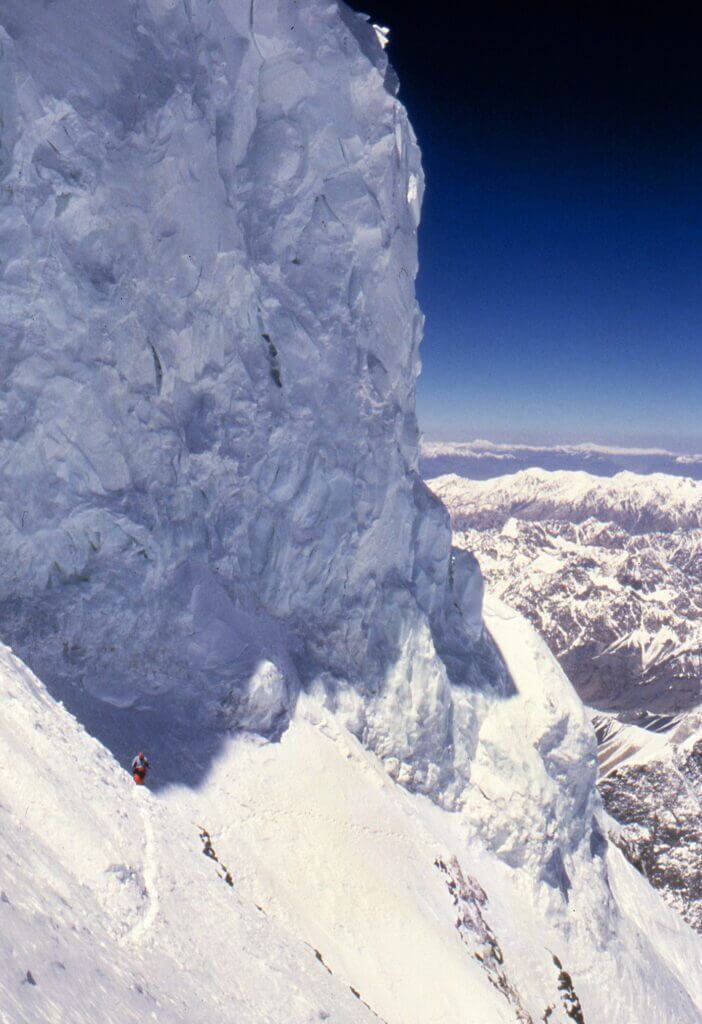
The window for scaling K2 spans from June to August. However, in 2008, inclement weather prohibited any group from reaching the peak during the initial two months. As July drew to a close, ten teams found themselves idling in anticipation of favourable conditions, some having stalled for nearly two months. The interim period before their ascent was utilised for acclimatisation and laying the groundwork for the elevated camps on the mountain, the highest of which, Camp IV, is perched at a breathtaking 7,800–7,900 m (25,600–25,900 ft) above sea level.
Key Climbers Involved in the 2008 K2 Tragedy: A Closer Look
The narrative surrounding the 2008 K2 Disaster remains complex, disputed, and thus far not entirely revealed. Identifying the principle climbers and affiliating them with their relevant teams provides a clearer perspective on the events. The relevant climbers and their teams to note are as follows:
Norwegian Team: Constituted by Lars Nessa, Rolf Bae and Cecilie Skog, with the latter two forming a marital bond.
Norit Team: Included Cas van de Gevel, Wilco van Rooijen, Ger McDonnell and Pemba Gyalje Sherpa within its ranks.
Korean Team: Comprising of Kyeong-Hyo Park, Hyo-Gyeong Kim, Dong-Jin Hwang, two Sherpa members, Jumik Bhote and Pasang Bhote (both cousins), and finally, the team leader named Mr Kim.
American Team: Eric Meyer and Fredrik Sträng represent the American team.
Serbian Team: This team is made up of Dren Mandic, Predrag Zagorac, and Iso Planić.
French Team: Comprises of Hugues D’Aubarede and a high-altitude porter (HAP), namely Jehan Baig.
Solo Climbers: These individual adventurers include Alberto Zerain of Spain and Italy’s Marco Confortola.
Timeline of the K2 Disaster
Approaching the conclusion of July, several teams from around the globe gathered at Camp IV on the 31st of the month, proactively awaiting climatic conditions favourable enough to attempt the peak of K2. These included mountaineering groups from America, France, Norway, Serbia, and South Korea, along with their respective Sherpas hailing from the high ranges of Nepal. Sponsored by the Dutch company Norit, an international team also joined the collective endeavour, along with Pakistani high-altitude porters, commonly referred to as ‘HAPs’.
United in their ambitious endeavour, these diverse teams agreed to cooperate for the ascent on Friday, the 1st of August. Complementing the gathered teams, there were also several independent climbers – a solo adventurer from Spain and a duet traversing from Italy – who planned to seize the morning to reach the revered summit of K2.
K2 Disaster 2008: The Tragic Events of August 1
Summit Delays and Challenges in the 2008 K2 Expedition
In the frigid, pitch-black hours preceding midnight, the High Altitude Porters (HAPs) and Sherpas embarked on the task of setting up fixed lines. Accompanying them was Alberto Zerain, a solo mountaineer hailing from Spain, who had ascended from Camp III under the cloak of darkness and opted to commence his push towards the summit early, disregarding a stop at Camp IV. However, the collective expeditions faced a significant setback when Shaheen Baig, the most seasoned of the HAPs, was forced to descend, beset by the debilitating symptoms of altitude illness. His unmatched K2 summiting experience and the unspoken authority he held amongst the HAPs and Sherpas was gravely felt in his absence, leading to some disorder. There was an indication that crucial ropes may have been forgotten or erroneously positioned too far down the slope from the ‘Bottleneck’.
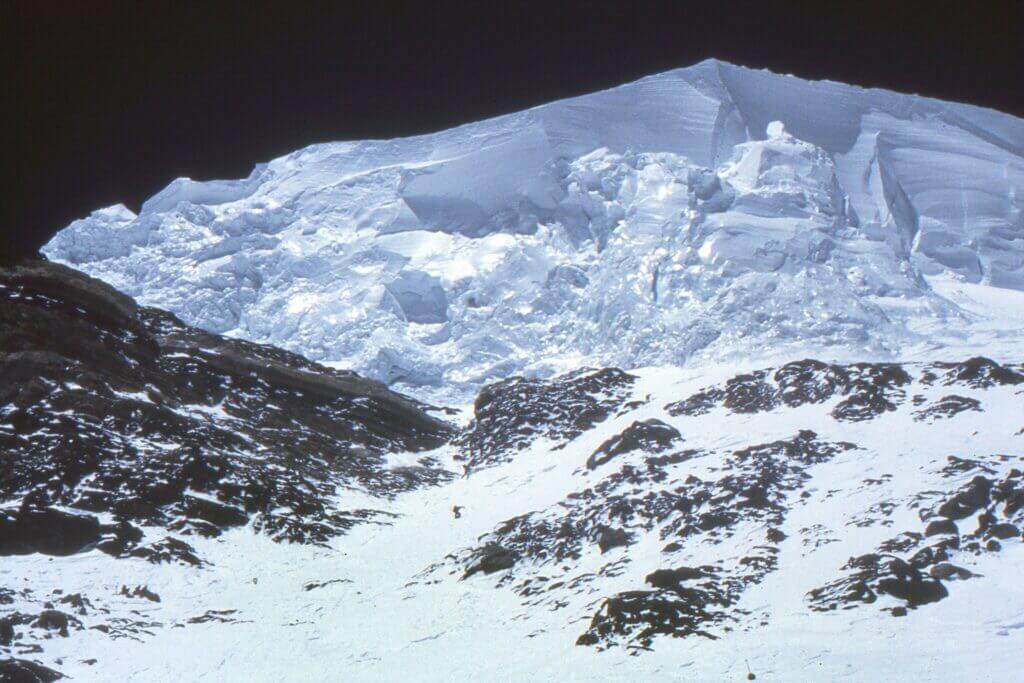
As the climbing contingents embarked on their upward journey at 03:00 a.m., they discovered that the HAPs and Sherpas had unexpectedly initiated setting up lines directly above Camp IV, where there was no requirement, and had run out of rope just above the perilous region known as the ‘Bottleneck’. This resulted in climbers having to remove the rope from the lower part of the route and utilise it for preparing the lines above the ‘Bottleneck’, thus instigating a hazardous and unforeseen holdup in the climbing itinerary.
At this juncture, Eric Meyer and Fredrik Sträng from the American squad made the collective decision to call off their ascent and return to the sanctuary of Camp IV, primarily due to the impending risk of a delayed summit and the significant danger presented by potential ice falls in the crowded ‘Bottleneck’. Undeterred, Chris Klinke persisted a few additional hours before reluctantly relinquishing his bid for the summit. Jelle Staleman from the Norit team followed suit, also plagued by early signs of frostbite on his feet.
Tragic Falls of Mandić and Baig: A Detailed Account
As the clock struck 8:00 a.m., the climbers embarked upon the perilous journey through the Bottleneck. Dren Mandić, a representative of the Serbian contingent, detached himself from the safety of his fixed rope to manipulate his oxygen brace and overtake the Norwegian mountaineer Cecilie Skog. A saddening loss of balance ensued, causing him to tumble and collide with Skog. Remaining tethered, she was merely upset while Mandić plummeted more than 100 meters down the foreboding Bottleneck.
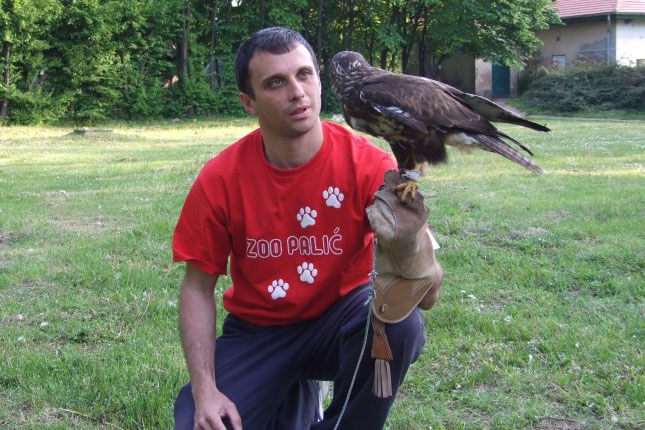
Witnesses at Base Camp IV, witnessing evidence of post-fall movement from Mandić, organised a recovery attempt. The intrepid Swede Fredrik Sträng assumed command leadership. As Sträng arrived at the scene of the accident, Serbian team members Predrag Zagorac and Iso Planić, alongside their High Altitude Porter (HAP) Mohammed Hussein, had already reached Mandić. A lack of discernible pulse and the severity of the injuries led to a grim conclusion – Mandić was pronounced dead.
Resolving to transport his body down to Camp IV, Sträng allied with the Serbian team. En route, they were joined by Jehan Baig, a HAP of the French team, recently relieved of his duties. Several climbers suggested Baig was affected by altitude sickness, evidenced by his erratic actions during the difficult descent of the Bottleneck. After repeated indecisive interactions with Sträng about aiding in the recovery, Baig lost his footing. In a desperate bid to prevent a catastrophic domino effect of tumbling climbers, Sträng urgently advised Baig to release the rope attaching him to Mandić. Executing this directive, Baig then startled his companions by neglecting to perform a self-arrest manoeuvre to halt his descent – a technique which may have afforded him a fifty per cent probability of surviving his fall. The reasons behind Baig’s seeming disregard for self-preservation remain shrouded in mystery.
Following Baig’s shocking fall, Sträng elected to retreat without Mandić’s body. The Serbian party also decided to withdraw. Swathing Mandić’s remains with a flag as a lasting tribute; they secured the body to the mountainside before commencing their descent. Simultaneously, Nicholas Rice of the French team, whose ascent had been delayed, also chose to descend.
The accumulation of setbacks, amplified by the congestion within the Bottleneck, resulted in the majority of climbers achieving the summit significantly later than the anticipated timeframe of 3:00 to 5:00 p.m. Some didn’t crest until as late as 8:00 p.m. The day yielded 18 summiteers, although eight, and an individual who remained below the summit, disastrously failed to endure the arduous descent. Remarkably, Alberto Zerain, the Spaniard who had initially led the ascent and reached the summit solo, navigated through the Bottleneck unhindered during his descent.
2008 K2 tragedy: Serac fall triggers deadly obstacles for climbers
By half past eight in the evening, K2 had become submerged in darkness. Several members of the Norwegian party, including Lars Flatø Nessa and Skog (both having reached the summit a couple of hours subsequent to Zerain), were nearing completion of the traverse towards the Bottleneck. Suddenly, a serac, a large mass of glacial ice, collapsed from above. During its descent, the serac severed all the secure lines and carried away Rolf Bae, Skog’s spouse, who had previously terminated his summit climb a mere 100 metres below the peak. Bae had entrusted Nessa with his wife’s safety while he awaited her return. Both Nessa and Skog managed to carry on their descent despite the severed lines, eventually reaching Camp IV during the night.
Consequently, the Serac’s collapse significantly escalated the difficulty of the return journey through the Bottleneck. The path became strewn with fragmented ice, and the remaining climbers found themselves marooned in the pitch-black ‘death zone’ above 8,000 metres. The climbers, having relied upon the secure lines, were without supplementary ropes or fall protection apparatus. This left them no option but to negotiate the notorious Bottleneck in what mountaineering parlance terms ‘free solo’ descent. According to Dutch mountaineer Wilco van Rooijen from the Norit team, panic ensued amongst the climbers caught on the high ridge above the Bottleneck. Some made the perilous decision to descend in the dark, while others decided to establish temporary overnight shelters, electing to delay their descent until the break of dawn.
Surviving the Dark Descent: Pivotal Moments
The Norit expedition comprised Pemba Gyalje, a Sherpa who, in the years prior, had served as an auxiliary climbing force on Mount Everest. Under cover of darkness, Gyalje undertook a daring descent, bereft of the safety of fixed ropes, arriving at Camp IV before midnight. In a concurrent descent, Sherpa Chhiring Dorje navigated through the infamous Bottleneck, securing ‘Little’ Pasang Lama, who found himself stranded sans his ice axe to his harness. This perilous endeavour is vividly evoked in Ed Viesturs’ account, K2: Life and Death on the World’s Most Dangerous Mountain, “The process involves planting each foot firmly, anchoring the axe, and instructing the other climber to create holds with his hands and kick with his feet. A false move would likely have fatal consequences, with Pasang taking Chhiring down with him. This is an incredible display of selflessness.”
In a similar vein, two members of the South Korean contingent, Kim Jae-soo and Go Mi-Young, managed to chart their course through the perilous Bottleneck in the blackness of the night. However, the journey proved too tough for the latter, requiring support from climbers who had planned to reach the summit the subsequent morning. Having embarked on this uphill climb around midnight, devoid of food or oxygen, they discovered Go Mi-Young stalled within the Bottleneck, her chosen route a matter of uncertainty. They responsibly and safely guided her down the mountain.
D’Aubarède’s Fatal Descent During 2008 K2 Disaster
Within the shroud of darkness, both Norit team member Cas van de Gevel and Hugues D’Aubarède of the French squadron made the critical decision to navigate the perilous Bottleneck. Upon reaching its lower echelons, van de Gevel was met with the chilling sight of a fellow mountaineer tumbling to a fatal descent – a harrowing sight similarly witnessed by Sherpas Chhiring Bhote and “Big” Pasang Bhote. It is largely believed that this unfortunate soul was D’Aubarède, who’d been encountered by van de Gevel just prior to the treacherous Bottleneck. Bereft of supplemental oxygen and visibly weary, D’Aubarède was insisted upon by van de Gevel to delay his descent.
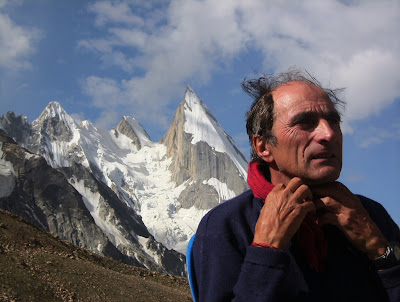
Simultaneously, Marco Confortola – an independent Italian climber – along with van Rooijen and Irishman Ger McDonnell, members of the Norit cohort, were forced to bivouac above the traverse. Their search for the fixed ropes to guide them across had proved fruitless. Confortola spoke of an unsettling experience during the bivouac, claiming to have heard terrified cries and seen the faint illumination of headlamps descend into nothingness, all this accompanied by an ominous roar wafting up from the serac field. At this point, eight individuals remained dauntingly positioned above the infamous Bottleneck.
August 2, Efforts and Unraveling Mysteries of the K2 2008 Disaster
In the heart of the base camp, swift actions instigated the monumental rescue operation, dispatching a team skyward, armed with ropes, resolute in their mission to extricate the remaining climbers ensnared in the perilous region known as the Bottleneck. The cohort comprised experienced Sherpas, Tsering Bhote and the formidable “Big” Pasang Bhote, who had earlier facilitated the descent of Go Mi-Young from this precarious section of the mountain. Their mission ominously shifted, launching an intensive search for their kinsman, Jumik Bhote, who was reportedly stranded alongside the remnants of the Korean expedition in an unidentified location beyond the Bottleneck.
Dramatic Rescue Attempts during the 2008 K2 Disaster
In the pre-dawn hours, amid the daunting terrain of K2, Van Rooijen abandoned the quest for the set ropes, embarking on a solitary descent. The rapid deterioration of his vision spurred urgent concern about impending snow blindness, necessitating swift evacuation from the mountain. His fellow climbers, Confortola and McDonnell, did not trail immediately. Subsequently, Van Rooijen encountered the final group of Korean climbers, amongst whom Confortola asserted the presence of Kyeong-Hyo Park and their guide, Jumik Bhote.
Trapped within an intricate web of ropes, the men had endured a nocturnal ordeal, with indicators of traumatic hardship permeating their appearance. The exact cause of their plight remains veiled, potentially attributed to a subsequent serac fall, an avalanche, or perhaps a standard tumble resulting in the rope entanglement. Early sources recount the straggled pair as two Koreans and Jumik Bhote, while subsequent reports point to the presence of an additional Korean climber, teetering on the brink of demise. This incident could correlate to the account relayed by Confortola of the events he bore witness to from his bivouac on the previous evening, or alternatively, it may ascertain the second entity Tsering Bhote and “Big” Pasang Bhote purportedly observed plummeting off the mountain- the evidence remains rather indistinct. Increasingly incapable of substantially assisting the stranded individuals, Van Rooijen provided Jumik Bhote with a reserve pair of gloves before advancing on his downward journey, buoyed by Bhote’s claim of an impending rescue mission from Camp IV.
Later in the day, Confortola and McDonnell arrived at the scene of the entangled Koreans. After concerted efforts to liberate the trapped climbers, the proceeds further into uncertainty. Allegedly, McDonnell abruptly retraced his steps up K2, compelling Confortola to assume command of the plight of the trapped men, believing McDonnell to have succumbed to altitude sickness, becoming delirious with an irrational desire to resume the ascent. Providing Jumik Bhote with his own equipment, Confortola strove to alleviate their plight and was able to communicate with the ascending rescuers Tsering and “Big” Pasang Bhote, announcing the worrisome situation. Exhausted after three hours in the company of the entangled climbers, Confortola felt compelled to resume his descent.
Contending aspects of the tale arise from Van Rooijen, challenging this narrative. He speculates that McDonnell did not retrace his ascent; instead, he surmised that McDonnell sought to redistribute the load by climbing to the highest anchor point; upon his return, he potentially committed several more solitary hours striving to free the men. Substantiating his perspective, Van Rooijen’s book, Surviving K2, presents photographic materials purporting the same.
Survivors and Casualties: Unraveling the Accounts of the 2008 K2 Disaster
Confortola reported that an avalanche occurred merely metres away following his departure from the trio. Amid the detritus of this natural disaster, he discerned the remains of one mountain climber. Following close inspection, he deduced them to be those of McDonnell.
Just past midday, Tsering Bhote and Pasang Bhote, affectionately known as “Big”, arrived at the onset of the Bottleneck ascent. Here they encountered Confortola making his laborious attempt on his hands and knees to descend the mountain. The Bhote duo relayed the situation via radio to Gyalje and Van de Gevel, requesting their assistance to support Confortola, allowing the Bhotes to continue their search for their kin, Jumik Bhote, and their Korean companions.
In a subsequent radio transmission, “Big” Pasang Bhote informed Gyalje that he had found Jumik Bhote and a pair from the Korean team just higher than the Bottleneck. Miraculously it appeared that they had managed to escape their tethered state. He likewise relayed an unfortunate event; a fourth climber, who had been descending behind the Korean pair and Sherpas, had unfortunately succumbed to a serac fall. This climber was identified by McDonnell’s distinctive red-and-black climbing attire, suggesting that Confortola had been mistaken in his earlier identification of McDonnell’s remains within the avalanche debris. This provides further support for Van Rooijen’s hypothesis that McDonnell had successfully untied the Korean climbers and Jumik Bhote, only to meet his demise in a distinct serac fall.
Furthermore, from his vantage point at the bottom of the Bottleneck, Tsering Bhote declared that he witnessed a catastrophic serac fall overtake the rescue party while descending near the Bottleneck’s apex.
The Mystery of the Missing Climber: Karim’s Fate in the 2008 K2 Disaster
Here, a further enigma ingrained in the 2008 K2 catastrophe introduces additional perplexity to the chronology of occurrences. One mountaineer’s status remained unknown: D’Aubarède’s High Altitude Porter, Meherban Karim. Karim was last sighted departing from the summit alongside D’Aubarède during the twilight hours of 1st August. It can be deduced that Karim and D’Aubarède were isolated in the gloom, as van de Gevel encountered only D’Aubarède atop the Bottleneck. Van Rooijen, in his narrative Surviving K2, argues that Karim bivouacked at a higher altitude on the mountain compared to Confortola and McDonnell. Once again, van Rooijen supplies photographic proof: a silhouette resembling a climber can be discerned above the serac field on the dawn of 2nd August. In a subsequent image, the character appears to have vanished, and a trail descending the seracs is evident. Van Rooijen and other individuals, such as McDonnell’s associate, Annie Starkey, are confident this figure was Karim. Dazed from an oxygen-deprived night at such lofty altitudes, he could have lost his bearings and found himself in the serac field, where he might have tumbled or been dragged away by an avalanche or a segment of the disintegrating serac. It is conceivable that he may have triggered one such serac collapse. Consequently, it could have been Karim’s remains that Confortola discovered previously amid the avalanche debris.
In his novel No Way Down (2010), Graham Bowley fails to disprove the evidence brought by van Rooijen but believes the photographs to be, at best, unsubstantiated. He is accompanied in his analysis by author Michael Kodas. Both individuals are inclined towards the account of the sole surviving eyewitness: Marco Confortola. In the images captured by Gyalje, individual mountaineers are imperceptible. Indeed, some of the presumed climbers could be rocks and markings that resemble trails scattered across the mountain.
Confortola’s assertions were, at most, contradictory. Many of his declarations were later disproven. Upon his initial interview at Milan Airport, he insisted that he had liberated the Korean mountaineers. However, it was later stipulated that it was McDonnell who had accomplished the task. Confortola potentially misidentified a corpse, later hypothesised to belong to a different climber than McDonnell’s. Regarding the previous night, Confortola reported that he and McDonnell had watched climbers being swept away, opting to bivouac until daylight. He conveyed that van Rooijen had joined them later. However, van Rooijen refuted this claim. He informed McDonnell’s family that they had all embarked together and simultaneously bivouacked. In conclusion, a significant fraction of the story’s accuracy relied on the renditions of events by van Rooijen and Gyalje. One reason Confortola’s interpretations of events were initially accepted was due to his promptness in addressing the media. Gyalje was still in the process of hiking out of the mountain range when Confortola was delivering his accounts. Several days passed before Gyalje could share his perspective of the incidents.
An alternative hypothesis suggested involves a miscalculation in “Big” Pasang Bhote’s discernment regarding the colour of the suit – indicating that the final climber could have been Karim, who was clad in a blazing red down suit. If this was the case, Confortola had accurately identified McDonnell’s remains in the previous avalanche. Various credible scenarios underline the prevailing doubt, even amongst eyewitnesses, regarding the sequence of events on K2 that fateful day.
In Buried in the Sky (2012), Amanda Padoan and Peter Zuckerman scrutinise the Sherpa and HAP narratives of the 2008 disaster in greater depth, introducing plausible alternative events and explanations, including the potentiality that McDonnell and Karim were still alive at the time of the fourth serac collapse.
2008 K2 Disaster: Fatal Avalanche Claims Four More Lives, Death Toll Rises to 11
In the aftermath of “Big” Pasang Bhote’s distressing communication revealing the disturbing discovery of his kin, Jumik Bhote, alongside two Koreans, the mountain released yet another devastating torrent of snow and ice. The terrifying, unrelenting avalanche, or serac fall, ruthlessly seized the quartet and plunged them into oblivion.
Tsering Bhote, another member of the recovery team and relative to “Big” Pasang, had been forging a steadier path up the perilous terrain known as the Bottleneck. His measured pace inadvertently made him a fortuitous survivor of the cruel onslaught of falling snow that had claimed so many lives. Fate smiled equally upon Gyalje and Confortola, located at the base of the Bottleneck, sparing them from the cold, brutal clutches of the indifferent avalanche.
With a heavy heart, it was reported that the death toll tragically escalated to 11, a sobering reminder of the ruthless might of nature, forever etched amidst the chilling winds of the K2 disaster of 2008.
Wilco van Rooijen’s Solo Survival in K2’s ‘Death Zone’
Amid the harrowing event, van Rooijen was navigating his way down the formidable peak solitarily. He had systematically negotiated a fresh pathway to the left of the notable Česen route, effectively circumventing Camp IV. Simultaneously, van de Gevel and Gyalje were making their way from Camp IV to Camp III, having received knowledge that van Rooijen was yet to be discovered somewhere on the seemingly hostile terrain of the mountain. Van Rooijen had succeeded in making a series of satellite phone calls, a manoeuvre that may have been instrumental in identifying his precise location.
Ultimately, he was compelled to endure another bivouac out on the mountain, succumbing to third-degree frostbite that affected his feet. In the annals of mountaineering, Wilco van Rooijen is amongst the rare breed of individuals ever to have borne the brunt of survival for two consecutive days above the perilous 8000m ‘Death Zone’. Thus, marking a chilling saga in the K2 disaster of 2008.
Survivors’ Heroic Evacuation from the 2008 K2 Disaster
On a crisp Saturday morning, a connection was established between Van de Gevel, Gyalje, and van Rooijen along the much-tried Česen route; the triumvirate deftly descended to the refuge of base camp by 10:00 p.m. Come dawn, Van de Gevel and van Rooijen were swiftly airlifted from the veritable sanctuary of base camp to the scenic town of Skardu, courtesy of a helicopter evacuation.
Meanwhile, Confortola surfaced victoriously at the forward base camp, fondly labelled Camp II. Following in the aftermath was an official missive from Pakistani authorities detailing a sombre assembly of names representing those tragically killed and injured in the ordeal. The subsequent day, Confortola was himself evacuated via helicopter in a spectacle that was both salvation and a stark reminder of the treacherous face of adventure.
Dissecting the Truth: The Controversial Rescue Stories of the 2008 K2 Disaster
Initiating a rescue operation in the eerily quiet pre-dawn of 4 August 2008, the Pakistani military swiftly deployed a pair of helicopters to aid the beleaguered climbers on K2. In an impressive show of prowess, they managed to reach two Dutch climbers suffering from severe frostbite and injuries at the frigid base camp positioned some 5,000 metres above sea level.
Elsewhere on the mountain, a group composed of four resolute climbers, including an Italian, were methodically and bravely carving their own path down the icy slopes. Upon reaching a safe altitude, they were promptly airlifted to Skardu for urgent medical care. Amidst this vivid drama, Van Rooijen was discovered thanks to the vital information provided by his Thuraya satellite phone, which transmitted crucial GPS coordinates mid-call to his brother.
In the dreaded Death Zone, manifestly a treacherously dangerous area located beyond the 8,000-metre mark on any mountain, Marco Confortola endured an unthinkable 36 hours before he was eventually rescued. Feats of endurance continued as, roughly 18 hours later, the figure of Wilco van Rooijen materialised from the snowy wilderness. Discovered by Cas van de Gevel and Pemba, Wilco had faced the brutal elements of the aptly-named Death Zone for an astonishing 60 hours.
Disputing Memories: Marco Confortola’s Contested Account of the K2 Disaster
Confortola emerged as a contentious character in this devastating incident, already shrouded in uncertainty and inconsistency. His interactions with the media depicted him as a saviour of other climbers and cast blame upon the expeditions for their “lack of experience and substandard equipment”.
The unfolding of events, as per numerous climbers, varied significantly. However, it was Marco’s narrative that reigned supreme, at least until it was challenged.
In the aftermath of the disaster, the family of Ger travelled to Islamabad to confer with Wilco Van Rooijen. They communicated that Marco had informed them about witnessing climbers being swept away, prompting him and Ger to bivouac until sunrise beyond the location of the fixed rope. Marco indicated that Rooijen had joined them subsequently. Rooijen, however, contradicted this, asserting to the family that they had all initiated the bivouac concurrently.
Exhibiting immense patience and understanding, Rooijen addressed the queries put forth by Ger’s family, even elucidating the sequence of events through a diagram. However, much left unsaid, as a majority of the occurrences unfolded during Rooijen’s descent.
The family held the belief that their inquiries would be more effectively addressed by Pemba, who at that point was descending from the Karakoram range, accompanied by the remaining members of the Norit Team.
Unveiling the Truth of K2 Disaster 2008: Pemba’s Testimony and Photographic Evidence
Pemba’s harrowing encounter with Marco, discovered near hysteria beneath the Bottleneck, paints a vivid picture of the extremity of their situation. Marco was virulently resistant to Pemba’s attempts to administer oxygen, his verbal abuse and tears indicative of hypoxia, a common affliction at high altitudes.
As Marco embarked on his journey back to Islamabad, Pemba was arriving. The media circus had dissipated, none seeking Pemba’s testament of the unfolding events.
Upon arrival in Italy, Marco held a press conference at Milan Airport. Addressing the media, he claimed to have spent several hours attempting to rescue the Korean climbers, asserting, “It was something that just came from my heart. It was after that that I paid the consequences.”
Subsequent versions of his tale were inconsistent with various iterations of his part in the rescue and the last sighting of Ger McDonnell, who he suggested was far from the Koreans and disoriented due to hypoxia.
Annie Starkey, Ger’s partner, later suggested that Marco’s changeable narratives were enabled because there were no survivors to challenge his account. Free of dispute, he could tell his story as he pleased. In the following days, Pemba joined Cas and Ger’s family, providing his narrative backed by photographic evidence gifted by Ger after their ascent.
Pemba presented that Ger had remained behind to assist the Koreans. Moments before a lethal icefall gathered the Koreans and two Sherpas, Pemba was informed that the identical icefall had seized a climber in red and black attire, Ger. Progressing through the day, Pemba captured images that buttressed the account of Ger being the hero, not Marco.
The photographic evidence suggested that the two Sherpas’ final resting place post-icefall was only achievable if they had been liberated from their ropes, in the midst of descent, at the point of their demise.
The fate of the three Koreans, released or not from their tethers, remains uncertain. The evidence, however, unequivocally supports that it was Ger McDonnell who had unclipped the Sherpas from their ropes prior to his own fall.
In a later act of goodwill, Marco made monetary contributions to the family of the Sherpa he alleged to have tried to assist.
After K2 Disaster 2008: Heroes, Tragedies, and Enduring Memories
Renowned climber Marco Confortola penned his experiences in an Italian tome aptly named ‘Days of Ice’. The family of the late Ger McDonnell took it upon themselves to establish a philanthropic endeavour, a charity dedicated to supporting the offspring of the four ill-fated High Altitude Porters whose lives were claimed by K2.
A book titled ‘Buried in the Sky’ (2012) intricately narrates the lives and experiences of Chhiring Dorje Sherpa and “Little” Pasang Lama, both of who share a common legacy on this formidable mountain. The book’s enthralling narrative was recognised by a host of accolades, including the National Outdoor Book Award in the History/Biography category, the 2012 George Orwell Award under NCTE and the revered Mountaineering History Award at the Banff Mountain Book Festival.
Chhiring Dorje Sherpa’s valourous acts were celebrated with the Tenzing Norgay Award at the prestigious Explorers Club Annual Banquet held in March 2013. Pemba Gyalje Sherpa won the 2008 National Geographic Adventure Adventurer of the Year honour, acknowledging “extreme heroism under trying extreme circumstances”.
In his book ‘K2: Life and Death on the World’s Most Dangerous Mountain’ (2009), Ed Viesturs shares his astonishing experiences and has been an active participant in various media projects related to K2. Likewise, Dutch climber Wilco van Rooijen published his survival story ‘Surviving K2’ in both Dutch and English languages. Norwegian Explorer Cecilie Skog also joined the cadre of authors narrating their experiences with K2, authoring a book in Norwegian dedicated to her late husband Rolf titled ‘Til Rolf’.
Cecilie Skog: Pioneering Female Explorer of Antarctica in the Aftermath of the 2008 K2 Disaster
In the annals of polar exploration, 2010 was a notable year. Cecilie Skog, a sturdy Norwegian adventurer, gained distinction by becoming the maiden woman to traverse the frozen expanses of Antarctica under her own steam, sans external aid. Her relentless triumph was, in due course, emulated by the indomitable Ice Maidens’ Expedition. Originating from Britain, this steadfast squad, composed entirely of bold females, gallantly duplicated Skog’s endeavour of traversing the glacial desert unsupported and unassisted.

Drawing parallels, one has to acknowledge the awe-inspiring feat accomplished by Second Lieutenant Scott Sears. Etching his name into the history books, he secured the badge of being the youngest man to navigate the long lonesome stretches of Antarctica singlehandedly, without assistance or backup. This monumental feat was under the aegis of Shackleton, adding to its unprecedented glory.
Wilco van Rooijen’s Historic Survival on K2: A Tale of Frostbite and Endurance
Wilco van Rooijen is a distinguished mountaineer who holds the unique distinction of surviving two bitter nights without shelter on the majestic K2, often referred to as the King of Mountains, a feat achieved by no other mountaineer.
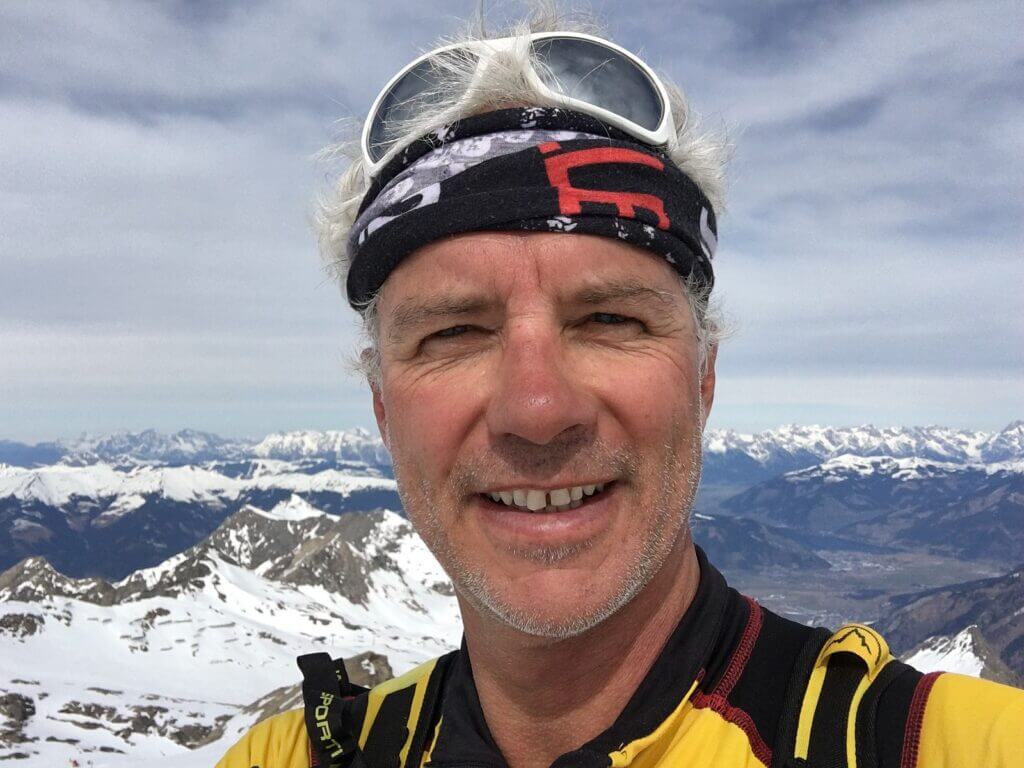
Alas, while van Rooijen and his fellow climber Marco displayed substantial resilience and hardiness in the face of the gruelling conditions, they were not entirely immune to the ravages of the extreme cold. A regrettable consequence of their valiant endeavour was the loss of all their toes, a sacrifice to the relentless onslaught of frostbite that made a chilling mark on their undeniably heroic journey.
Pemba Gyalje Sherpa: A Hero in the 2008 K2 Disaster
Pemba was positioned in the infamous Death Zone for a protracted ninety-hour episode, dedicating seventy of those strenuous hours to the orchestration of rescuing misplaced mountaineers.
His remarkable endeavour was recognised half a year later when Pemba was bestowed with the ‘Adventurer of the Year accolade by National Geographic, underscoring the significance of his tremendous bravery and skill.
Remembering Alberto Zerain and Unraveling the Controversy of the 2008 K2 Disaster
The untimely demise of Alberto Zerain on Nanga Parbat during the summer of 2017 is unfortunate. This tragic news was relayed to Fredrik Sträng in the midst of his K22017 expedition.
The cataclysm of the 2008 K2 disaster evolved into one of the most devastating events in the annals of mountaineering, earning it notoriety as the most contentious mountain calamity. Diverse interpretations of the same incident add further complexity. The circumstances surrounding Karim Meherban’s disappearance continue to remain an enigma, with conflicting accounts of the climber’s last known whereabouts. No definitive explanation as to what exactly transpired with the Korean team was established, nor why they were discovered dangling from an icy ledge.
Whilst retrieval of the fallen climbers’ bodies proved to be impossible, their memory persists. Ger is fondly remembered as the “Guardian of the Mountain”. He earned the distinction of being the first Irishman to conquer K2’s lofty heights.
A statement by Pemba noted, “In retrospect, had everyone decided to retreat following the Serbian climber’s fall, the tragic tally might have been limited to one instead of the staggering 11.”
Recalling the Victims of the 2008 K2 Climbing Disaster
Throughout 2009 and 2010, the lofty summit of K2 remained untouched. This period bore witness to the tragic incident in which the acclaimed skier, Fredrik Ericsson, succumbed to an unforeseen plunge within the perilous region known as the Bottleneck.
It was not until the late summer of 2011 that the peak was once more conquered. On the 23rd of August, a diverse assembly of mountaineers, distinctly Gerlinde Kaltenbrunner from Austria, Maxut Zhumayev and Vassiliy Pivtsov of Kazakhstan, and Poland’s Darek Zaluski emerged victorious. Their route to triumph involved a daunting ascent via the North Pillar, showcasing bravery in the face of K2’s notorious challenges.
Tragic Loss of Serbian Climber Dren Mandic in the 2008 K2 Disaster
Dren Mandic, a mountaineer of Serbian origin, tragically lost his life below the infamous ‘Bottleneck’ during a pernicious ascent. This regrettable event occurred in the infamous year of 2008 when the notoriously perilous climb of K2 claimed numerous lives.
This harrowing turn of events, which saw this valiant adventurer succumb to the ruthless perils of the world’s second-highest peak, further underscored the chronic hazards that are a grim hallmark of this treacherous mountain. An inopportune fall sealed Mandic’s woefully untimely demise during his endeavour to conquer the savage inclines.
Jehan Baig: A Fatal Fall on K2 in 2008
Jehan Baig, an accomplished Pakistani mountaineer, tragically lost his life below the perilous ‘Bottleneck’, following a treacherous fall. His unfortunate demise occurred as he devotedly endeavoured to recover the remains of fellow climber Dren Mandic.
Norwegian Climber Rolf Bae: A Casualty of the 2008 K2 Disaster
Norwegian mountaineer Rolf Bae, who coincidentally became the third casualty in the disastrous K2 mishap of 2008, tragically lost his life on ‘The Bottleneck’. This perilous strip of the mountain is notorious for its treacherous terrain, where he was stationed post an icefall. Notably, it also hosts a significant number of fixed ropes, highlighting the challenges faced by even the most expert of climbers.
Tragic Night Descent: The Death of Hugues D’Aubarede on K2
Hugues D’Aubarede, a formidable French mountaineer, tragically met his demise during the nocturnal descent of the notorious Bottleneck following a disastrous fall.
Tragic Death of Climber Karim Meherban
Karim Meherban, a mountaineer hailing from Pakistan, tragically met his untimely demise above the treacherous terrain known as the ‘Bottleneck’. The exact circumstances surrounding his unfortunate demise remain shrouded in mystery, with the specifics of how and where he perished still uncertain. It is, however, widely speculated that the fatal incident occurred during either the second or third perilous icefall.
Irish Climber Ger McDonnell’s Heroic Endeavor
Ger McDonnell, a proficient climber from Ireland, tragically lost his life in the oxygen-starved heights beyond the Bottleneck during his noble effort to provide assistance to the beleaguered Korean expedition. Caught in the tumultuous fury of the third icefall, he was irrevocably swept away – a grave and sombre testament to the treacherous whims of K2’s infamous 2008 disaster.
Tragic End for Korean Climbers
In the chilly darkness of the 2008 K2 disaster, three Korean mountaineers, Kyeong-Hyo Park, Hyo-Gyeong Kim and Dong-Jin Hwang, found themselves tethered in a precarious position on an icy ledge. Surrounded by the harsh alpine elements, they were marooned as a result of an unexpected icefall. A subsequent fourth icefall cruelly swept them all away, encapsulating a haunting narrative of the relentless, raw power of nature on this formidable peak.
Tragic Loss of Nepalese Sherpas
The K2 disaster of 2008 claimed several lives, including those of two Nepalese Sherpas, Jumik Bhote and Pasang Bhote. These cousins, experienced in their trade of mountain guiding, found themselves enveloped in tragedy at the formidable Bottleneck location of K2.
One was ominously left stranded, suspended amidst the bitter cold, as part of the Korean team. In an act of valour, his cousin Pasang was propelled up the deathly terrain in a desperate bid to bring him safely down. In a grim twist of fate, it was Ger McDonnell, an Irish mountaineer, who succeeded in liberating the stranded climber from the suffocating entanglement of ropes before meeting his own tragic end.
The cruelty of nature was on devastating display when the ferocity of the fourth icefall consumed the Nepalese duo. The shocking intensity of this natural occurrence led to the mountaineers being swept away in heart-rending circumstances as the world of adventure mourned the loss of two more brave souls.

